BREEAM Certification for Buildings
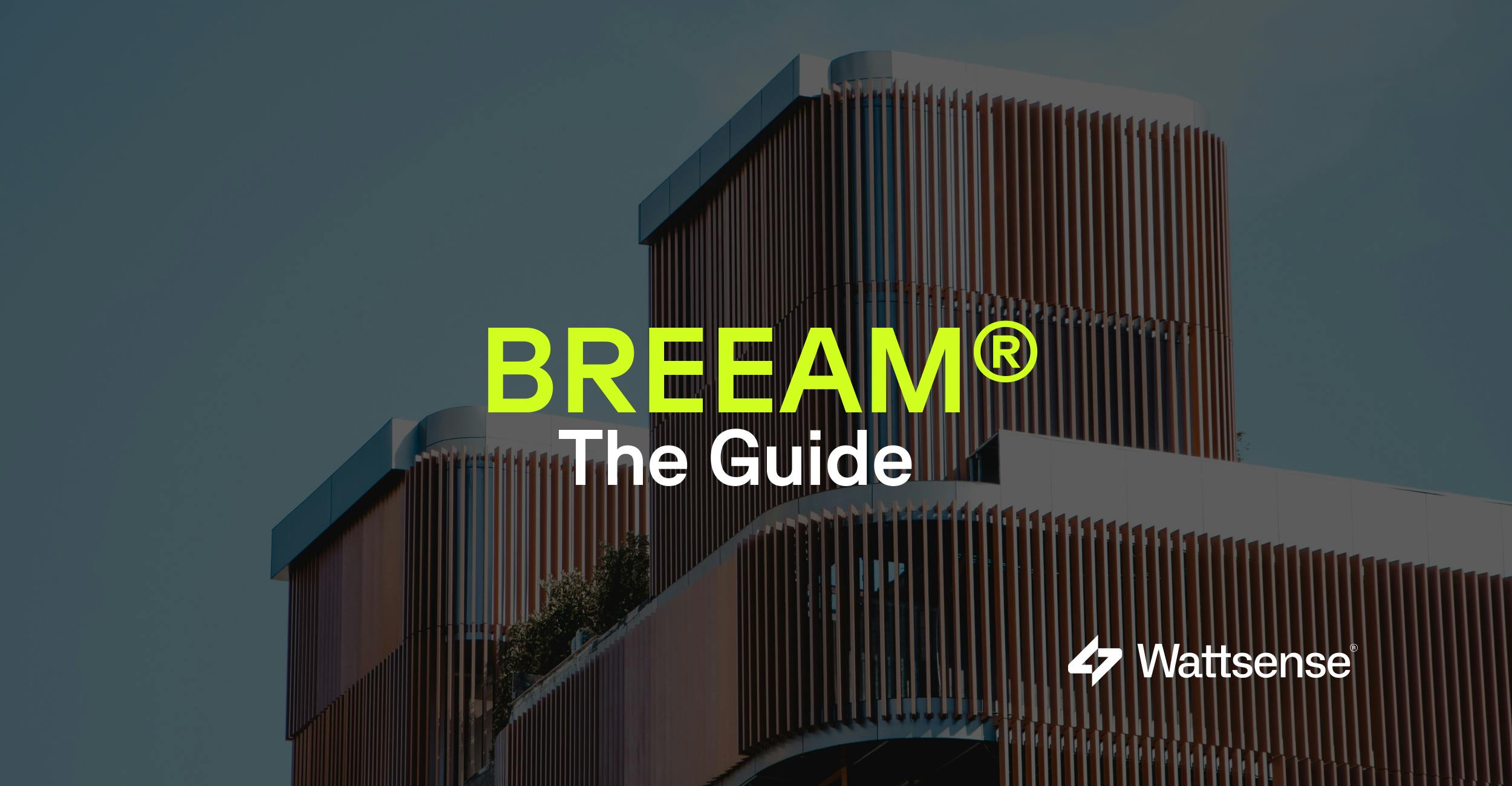
It's been about three decades since environmental certifications for buildings started gaining traction. Emerging in the early 1990s, they have since multiplied and become increasingly popular among developers. Indeed, ecological concerns have escalated in the face of a serious climate crisis and other threats to our planet. These certifications have evolved alongside their adoption, becoming more comprehensive and rigorous over time.
What is BREEAM Certification?
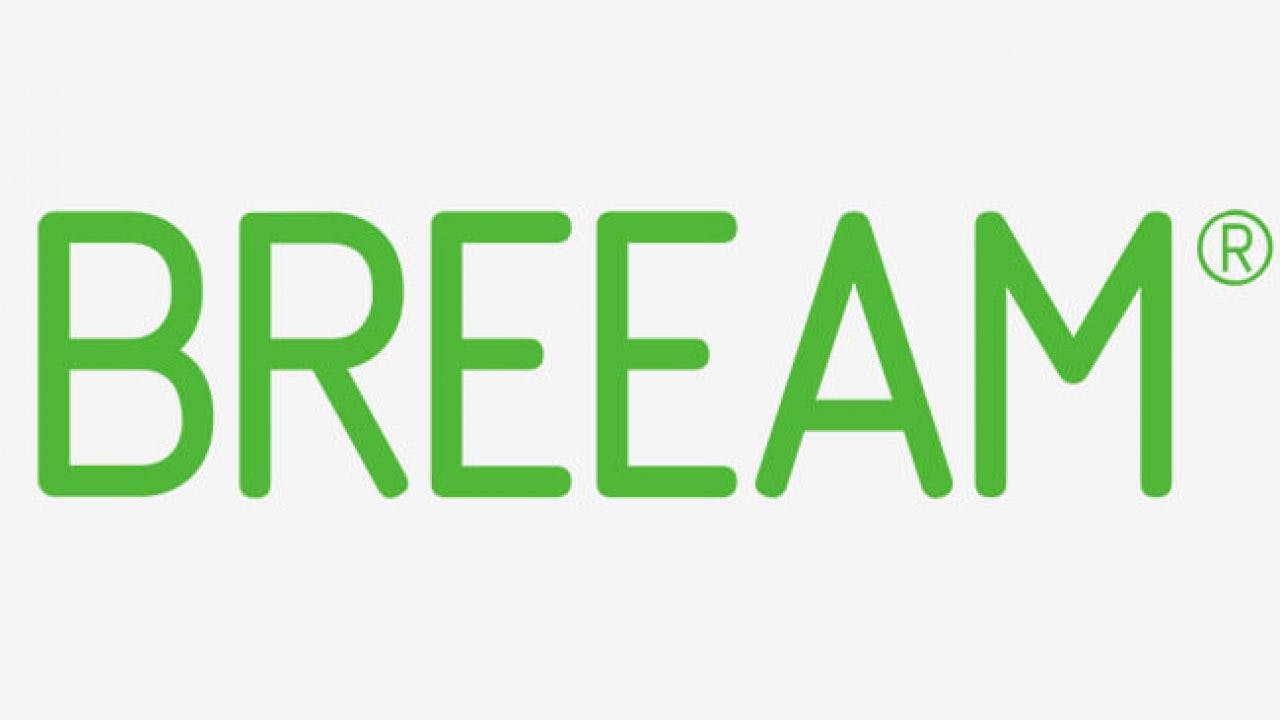
A British Label
BREEAM (Building Research Establishment Environmental Assessment Method) certification is a British environmental label designed to assess the environmental performance of buildings. Initiated in 1990 by the Building Research Establishment (BRE), this certification is internationally recognized for its comprehensive and rigorous approach. It's the oldest environmental certification in the construction field, currently used in over 80 countries.
BREEAM offers a multidimensional evaluation covering technical aspects, and usage, and also includes a human component related to the health and well-being of building occupants.
BREEAM certification has become one of the most widespread environmental standards in the construction industry, promoting sustainable construction and management practices.
With over 500,000 certified buildings worldwide, it applies to both new constructions and renovations, aiming to reduce buildings' ecological footprint by promoting better energy and environmental performance while ensuring occupants' comfort and health.
What Does BREEAM Certification Bring to Buildings and Businesses?
Engaging in a BREEAM certification process offers multiple benefits to owners of commercial buildings:
- It's an essential step in reducing human activity's impact on the environment. Contributing to sparing the planet from pollution and resource depletion is a priority for humanity. Governments are increasingly encouraging companies to comply with numerous and increasingly stringent regulations.
- Employing workers in BREEAM-certified offices facilitates the implementation of an internal environmental policy: to meet all the required criteria, many procedures can become part of the routine, such as waste management, energy-saving practices, incentives for sustainable mobility, etc.
- By ensuring optimal energy performance and, more broadly, efficient resource utilization, this certification significantly reduces operating costs related to energy or water. Savings can amount to hundreds of thousands of euros in large buildings.
- BREEAM-certified buildings also guarantee a better indoor environment, with good air quality, natural lighting, and improved acoustics, thus contributing to occupants' well-being.

Obtaining BREEAM certification also has a dual commercial impact:
1) Companies' environmental efforts are now valued in terms of image. Clients are easier to recruit and retain if the company demonstrates genuine commitment in this regard. The reputation of BREEAM certification is a clear testament to this. Additionally, it helps attract employees sensitive to this dimension.
2) This certification also enhances the building's value in the real estate market. The "greener" it becomes, the more attractive it is.
BREEAM certification is particularly relevant for tertiary buildings such as offices, where energy efficiency and quality of the working environment are paramount. Moreover, it aligns with the sustainable development goals of many companies, thus enhancing their brand image and social and environmental responsibility.
How to get a BREEAM Certification?
The first step to embarking on a BREEAM certification process is to register the relevant building on the BREEAM website. A detailed questionnaire assesses the overall state of the building in terms of certification criteria. This provides a provisional performance score, very useful for conducting the audit.
An Audit Based on Specific Criteria for Each Type of Building
A detailed audit must be conducted to obtain the BREEAM certification. It's performed by a consultant specialized in environmental certification. This process is based on a specific reference framework tailored to each type of building. Whether for buildings under construction, renovation, commercial, or office buildings, BREEAM certification takes into account the particularities of each structure. This customized approach ensures that all relevant aspects of the built environment are properly assessed.
The audit relies on a series of in-depth analyses on various points. Key criteria cover all aspects of building construction and management, allowing for a very comprehensive assessment.
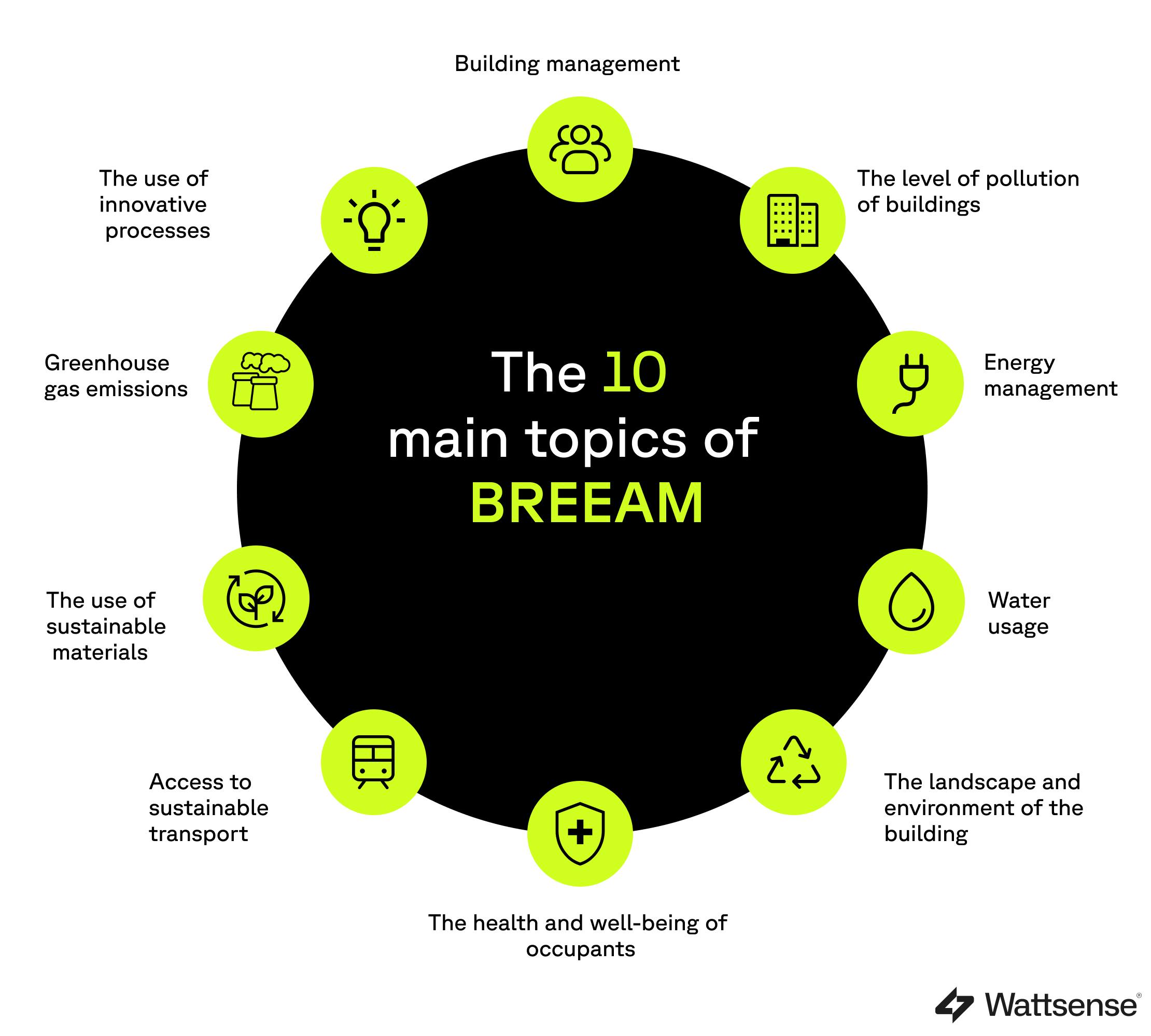
Energy
This analysis measures the building's overall energy consumption. It identifies areas for improvement to increase energy efficiency. Heating systems, air conditioning, ventilation, hot water, lighting, machinery, and electrical equipment are all inventoried and thoroughly examined.
Materials
The choice of construction and interior materials has a significant impact on the environment. The audit reviews the use of all materials and assesses their sustainability and recyclability. This includes managing construction and/or renovation waste, as well as indoor air quality and the lifespan of the materials used.
Water
Effective water management is another essential criterion. The BREEAM certification process records all water expenses and their sources to highlight potential losses: plumbing, faucets, wastewater management, water consumption data, everything is scrutinized, including detecting possible water leaks.
Building Pollution Level (Indoor Air, Waste...)
Indoor air quality and waste management practices are evaluated. The goal is to ensure that occupants work in a healthy environment and that waste management practices minimize their impact on the local environment. Installing indoor air quality sensors, for example, is an effective and simple way to monitor pollution levels.
Greenhouse Gas Emissions
All greenhouse gas emissions from the building are measured, identifying their sources. This takes into account not only emissions related to specific activities in the building but also occupants' commuting, energy consumption, etc.
Building Landscape and Environment
The analysis aims to assess the building's impact on its immediate environment. Once again, experts will seek to comprehensively identify anything in the building and its operation that may impact local biodiversity. This includes studying green space management, waste management, or measures taken to adapt to climate change.
Access to Sustainable Transport
This part of the audit verifies occupants' access to sustainable transportation means: public transportation, dedicated spaces for electric vehicles, incentives for cycling, and other sustainable mobility options, etc.
Occupants' Health and Well-being
A BREEAM-certified building must offer a healthy and comfortable environment for its occupants. Specifically, the auditor verifies the existence and implementation of an indoor air quality plan, the quality of lighting, and the choice of non-polluting materials.
To read: how to monitor CO2 and Indoor Air Quality (IAQ)
Building Management
The operation and monitoring of the building, from its construction to the daily management of its use, are another fundamental criterion. This includes maintenance, operation, resource management, as well as the implementation of a consumption monitoring system, ensuring that the building continues to operate sustainably throughout its life cycle.
Use of Innovative Processes
Finally, to continuously monitor and improve the quality of the various evaluated criteria BREEAM certification values innovation: it encourages the use of new technologies and methods to improve environmental performance, such as installing meters, sensors, etc.
Improving the BREEAM Score
Following the audit, a final score is assigned, synthesizing the building's performance across all the themes covered. Each criterion receives a different weighting, contributing to the overall score.
The building is then classified according to its overall score:
- Results below 30%: the building is not classified,
- Results between 30% and 45%: Pass,
- 46% to 55%: Good,
- 56% to 70%: Very Good,
- 71% to 85%: Excellent,
- Above 85%: Exceptional.
For a building to be BREEAM certified, it must achieve at least an "Adequate" status, reflecting its level of environmental performance.
To achieve a good score, the building and the company must therefore best meet the various criteria. If the audit was disappointing, it is entirely possible to quickly implement measures to significantly improve the BREEAM certification score. The five criteria that count the most in the final score are:
- Energy (25% on average),
- Health and well-being (18%),
- Global resources (12%),
- System resilience (12%),
- Water issues (10%).
"It is evident that efforts should prioritize energy issues and their management in the building. Wattsense solutions can assist you in this task!"
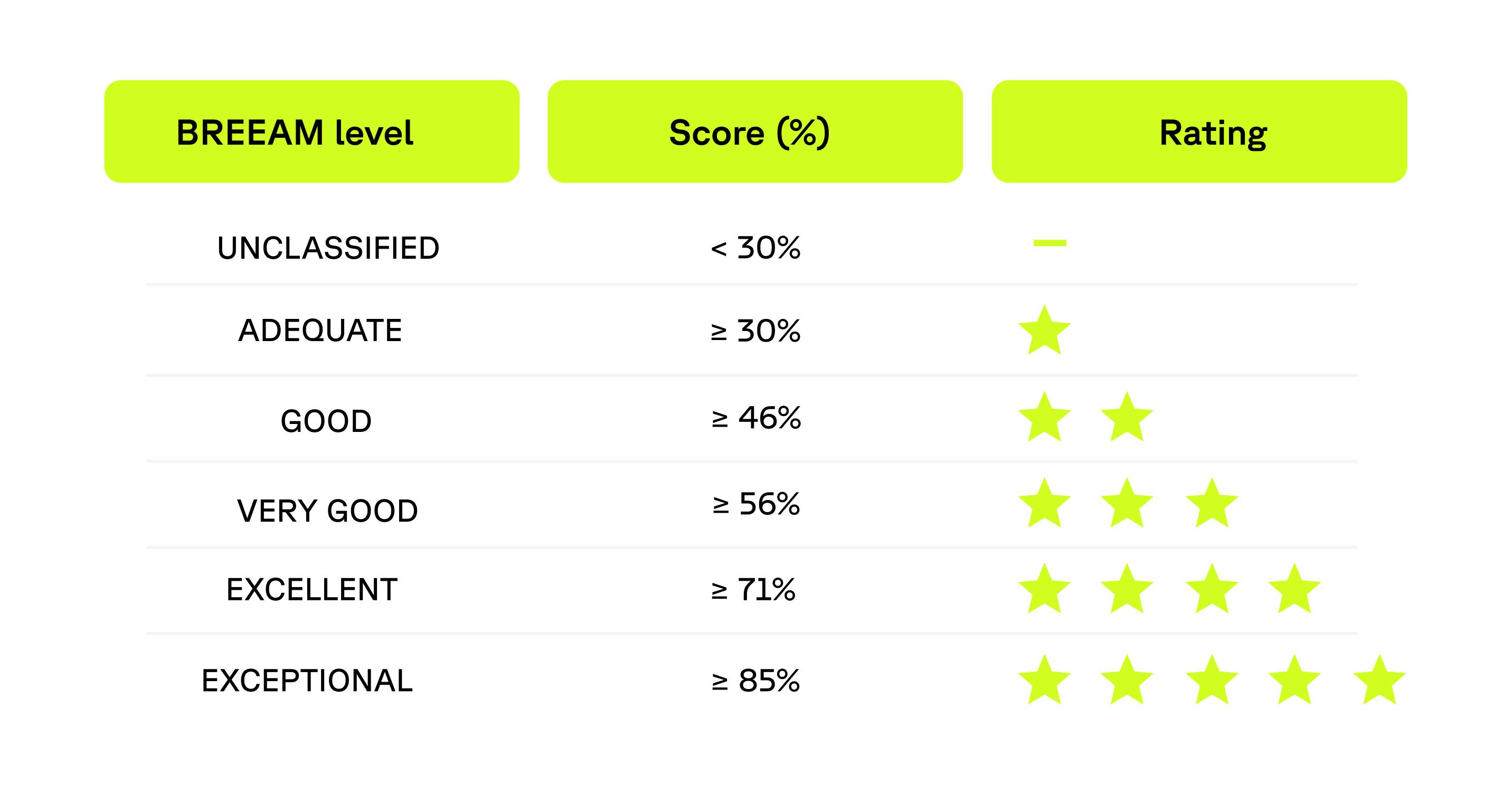
Cost of BREEAM Certification
The cost of BREEAM certification varies depending on several factors, such as the size and type of building, the project's complexity, and the desired level of certification. Generally, the fees consist of the evaluation costs conducted by the BREEAM auditor and the costs associated with the necessary modifications or improvements to meet BREEAM criteria.
The certification cost, if accepted, is lower than that of an NF HQE standard. It is estimated at just under €10,000 for a surface area of 10,000 m2.
The Wattsense Solution Facilitates BREEAM Certification
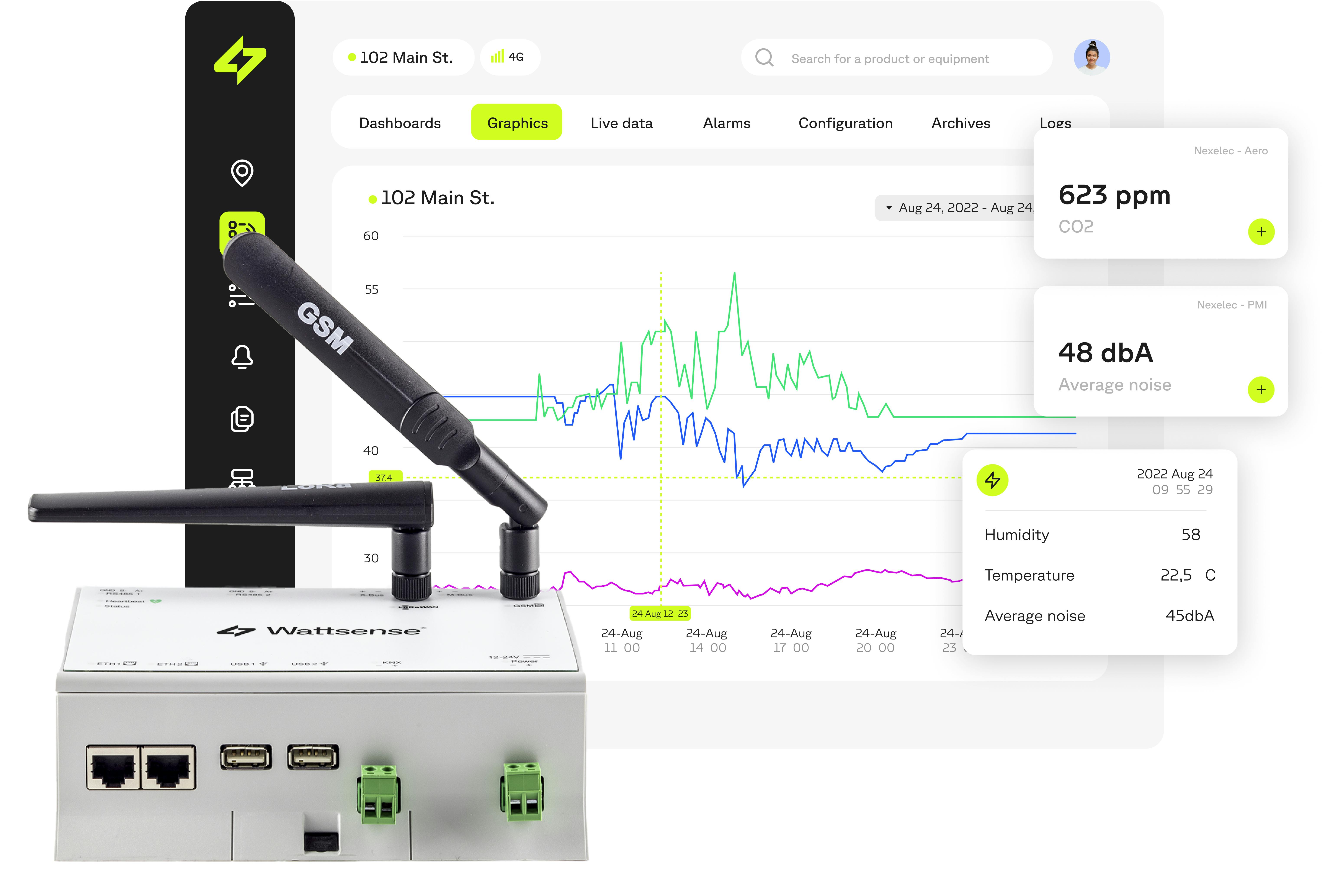
What is Wattsense?
Wattsense is an innovative technological solution designed to facilitate the management and optimization of systems within buildings. After quickly installing our solution in your building, you can:
- Connect your technical equipment and networks to unify their monitoring on a single interface.
- Upgrade your building through IoT by installing air quality sensors and energy meters.
- Implement data tracking useful for monitoring consumption, identifying energy-consuming equipment, and making improvement points visible.
- Transform your building into a Smart Building, thanks to the provision of your building's points on the Wattsense API, which provides access to many smart building management services.
You can then analyze the data directly via our user console or integrate it into a technical building and energy management strategy, an energy management system, or many third-party solutions. The result: personalized and in-depth management and control.
Wattsense's Essential Contribution to BREEAM Certification
The solution offered by Wattsense is a valuable aid in a BREEAM certification process, in three key areas:

- Energy Management: Wattsense enables detailed analysis of the building's energy consumption from meters and sub-meters, providing valuable insights to reduce costs and carbon footprint. Moreover, beyond simple monitoring and observation, thanks to complete connectivity with energy-consuming equipment, this solution allows for precise management of energy consumption.

- Water Management: Just as with electricity, through meter and sub-meter readings, you have access to rational and efficient management of water use in the building.

- Occupants' Health and Well-being: By monitoring indoor air quality, improving thermal comfort, and assessing legionella risks, the Wattsense system contributes to the health, safety, and overall well-being of occupants.
Wattsense is thus a preferred partner for companies seeking BREEAM certification for their buildings. By centralizing and efficiently managing buildings' environmental data and by connecting its solution with over 800+ pieces of equipment, Wattsense enables optimized energy and water management and actively contributes to occupants' well-being.
Want to learn more about the Wattsense connectivity solution?
Discover our solutionContinue reading




